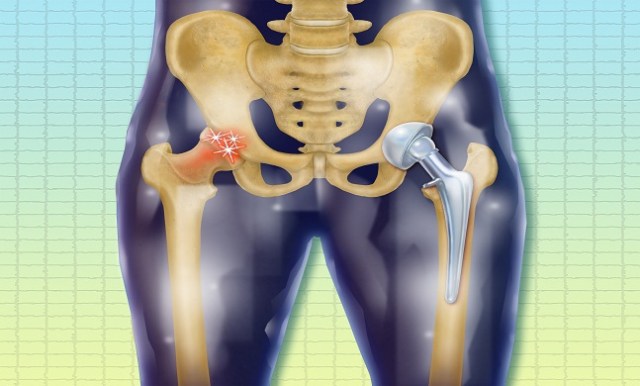Hip Joint Replacement
Overview
Total hip arthroplasty (THA) or total hip replacement has established itself as one of the most successful operations performed across all surgical specialties and is the definitive treatment of end-stage osteoarthritis (OA) of the hip. As its name suggests, THA is a surgery incorporated to remove a damaged hip joint and replace it with an artificial one. The surgery is undertaken only after all other treatment options to mend pain and stiffness have been used and have proven to be of no good. The success of THA addresses pain, stiffness and loss of function which in turn has led to its being labelled as the ‘operation of the century’ by the lancet.
Reasons for hip pain
As mentioned above, hip replacement surgery is the last step to indulge in after every other pain relief option has been tried. But what exactly causes hip pain?
- Osteoarthritis: Osteoarthritis, also known as ‘wear and tear arthritis’ is a condition characterized by a damaged cartilage that cushions the bones. This wear and tear usually happens as people age. Due to this, the hip bones rub against each other, causing pain and stiffness.
- Rheumatoid arthritis: The most common type of inflammatory arthritis, rheumatoid arthritis is an autoimmune disease which causes inflammation of the synovial membrane. This in turn damages the cartilage and bones of the affected area, thereby causing pain and stiffness.
- Traumatic arthritis: This is caused due to a serious hip injury or fracture which may damage the cartilage resulting in hip pain.
Usually surgery is recommended if the hip pain becomes unbearable and continues day and night, even while resting. Apart from that, surgery is a go to option if the stiffness in the hip makes it difficult for a person to move their leg and in-turn hinders routine activities.
Implant types
A total hip replacement comprises of an acetabular cup and a femoral stem that articulate with each other at the bearing surface. These are broadly classified according to the type of fixation that stabilizes the implant within the bone, either cemented or uncemented. In this traditional subdivision, cemented fixation provides mechanical fixation which relies on osseointegration, a biological bonding of the component to host bone. THA can also be performed using a combination of fixation methods for different components that constitute the construct; a hybrid THA utilizes an uncemented acetabular components and a cemented femoral stem, while in a reverse hybrid THA a cemented socket and uncemented stem are used.
The THA articulation or bearing can also be considered as two broad categories according to the materials used, i.e. hard-on-soft bearings (metal-on-polyethylene or ceramic-on-polyethylene) or hard-or-hard bearing (ceramic-on-ceramic or metal-metal). Each of these bearing choices has its own advantages and disadvantages. Metal-on-polyethylene remains the most commonly used bearing surface in THA. Ceramin-on-ceramin bearings produce the lowest wear rates, but overall ceramic-on-polyethylene bearings are associated with the lowest risk of revision.

